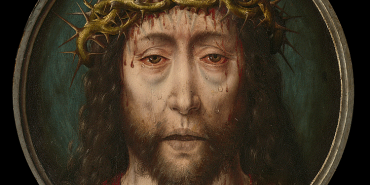The Anabaptists: From Shadows to Light

This year the Protestant world turns its face toward Wittenberg to celebrate the 500th anniversary of the Reformation. Many voices participated in the events of those years roughly around 1500-1648. Three Reformation wings—in Germany with Martin Luther, in Switzerland with Ulrich Zwingli and later John Calvin, and in England with Cranmer, Ridley, and Latimer – produced rich faith traditions that today, half a millennium later, are still vital to the Evangelical segment of the Body of Christ.
Yet there was another movement that did not fare as well as the more recognizable churches of the state-supported (“Magisterial”) groups. This was the fourth wing: a people’s movement called Anabaptists. They practiced believer’s baptism, grounded their authority for doctrine and practice in the New Testament, and preached the gospel. The Anabaptists are a critically significant part of our 500th anniversary. They, too, brought about reformation, but in a different way.
Cries for Reform
As the 16th century opened, Martin Luther began to question what he perceived to be the abuses of the Catholic Church of his day. This Catholic (Augustinian) monk questioned the Church’s authority and stood for “Scripture alone.” Luther questioned whether faith and salvation were earned or received by faith alone as a grace-gift from God through Jesus Christ’s death on the cross. He questioned the Church’s practice of granting “indulgences” in exchange for money. He opposed the practice of accumulating merit by performing acts of piety. He questioned whether the pope, bishop, or priest, could stand in the place of Christ to serve as mediator between people and God.
When Luther nailed his Ninety-Five Theses, a list of theological points to be discussed, on the door of the Wittenberg Chapel on 31 October 1517, his hammer struck a spark that blazed across Europe and Great Britain. Within days, Luther’s view of Scripture, the nature of salvation, and his marks of the true Church, had ignited in common people both a fresh understanding of God and His Church and a growing dissatisfaction with the Catholic Church they had known.
About the same time, in Switzerland, the young priest Ulrich Zwingli, also began to question the Church. Zwingli preached simple sermons each day on how to live rightly under the Lordship of Christ, and they struck a chord. The Zurich City Council responded by calling for reform in three separate theological “Disputations,” although it retained vestiges of Catholic practices. A small group of Zwingli’s young biblical students broke away from Zwingli partly due to his hesitation to implement changes they felt were necessary for reform. In January of 1525, they determined to form a new expression of church life, based upon a New Testament pattern. This decision was to be costly for them.
Early Anabaptism
The Swiss Brethren, as they came to be known, met on the evening of 21 January 1525, in the home of Felix Manz, despite the anger of the Zurich City Council. George Blaurock asked Conrad Grebel to baptize him to signify his declaration that Christ was his Lord. Grebel took water from a bucket and sprinkled it over Blaurock’s head as he solemnly knelt. Then Blaurock stood to his feet and baptized others who requested it. They all covenanted to live separately from the world, to teach the gospel of Jesus Christ faithfully, and to hold steadfastly to the truth of Scripture. That night they also formed a church of believers with baptism as the identification rite that symbolized a new life with Christ.
The Zurich City Council declared three mandates to be enforced immediately: these young men and their families were forbidden to meet together, their babies were to be baptized, and they were to conform to Zurich’s church within eight days or be deported. The Swiss Brethren chose to resist. They dispersed and preached, knocking on every door in surrounding villages, explaining their views of believer’s baptism and the nature of true faith. People responded, coming to faith in Christ, requesting baptism, observing the Lord’s Supper, and telling their neighbors about Christ’s offer of salvation by grace. In Zollikon, more than 300 persons were baptized from a milk pail and, in St. Gall, 200 people were baptized in the Sitter River on Palm Sunday.
Persecution
The retribution was swift and harsh. The Zurich City Council ordered the arrests of the leaders of the Swiss Brethren and imprisoned them on charges, penned by Zwingli, accusing them of sedition. Their followers were ejected from Zurich. In the months ahead, Grebel died of the plague. Felix Manz was arrested and sentenced to death on January 5, 1527, for gathering with others and being baptized, forming a separate church, and condemning capital punishment. The Council decreed that “Manz shall be delivered to the executioner, who shall tie his hands, put him into a boat, take him to the lower hut, there strap his bound hands over his knees, place a stick between his knees and arms, and thus push him into the water and let him perish in the water; thereby he shall have atoned to the law and justice . . . .”1
Many others also died for their faith. In four years the original leadership of the Anabaptist movement, about fifteen of them, had been killed. Martyrdom had become the hallmark of “the church under the cross."
Justo Gonzalez reports that there were more Anabaptist martyrs in the sixteenth century than in the first century under pagan Roman emperors.
Nevertheless, the results were remarkable. The dispersion of the Anabaptist refugees caused the movement to spread, including the Swiss and South German Anabaptists, the Hutterittes in Moravia, and the Mennonites in the Netherlands.
The second generation also experienced gruesome martyrdoms. Many were hunted across Europe and England for another 200 years until the intensity finally lessened.
Legacy of the Anabaptists
The Anabaptists shared many key characteristics with the Magisterial Reformers, including the authority of Scripture. Their unique contributions center upon their concept of the church. The Anabaptists emphasized a New Testament pattern of the church rather than the Old Testament model embraced by many Magisterial Reformers. The Anabaptists considered infant baptism, covenantal church membership, government-supported churches, and the persecution of heretics to be un-Christian concepts. For them, the Church was made up of “called-out” and committed disciples who were surrendered to Christ and to each other. These bore witness to their new birth through believer’s baptism, the practice of which also constituted a pledge of discipleship. They called their own pastors and practiced church discipline without the involvement of the State.
Like the Reformers, the Anabaptists also believed that the authority of government was God-given; however, in matters of religion, ultimate authority belonged to God rather than Caesar. For this reason, they believed that religious liberty was a biblical principle inherent in the gospel itself. Indeed, the very nature of the gospel demanded a free response. Once a commitment to Christ was made, the Holy Spirit transformed the believer’s life. The Lord’s Supper was both a sign of the fellowship of committed disciples and a solemn memorial of Christ’s sacrifice.
A final lasting legacy of the Anabaptists may lie in their influence upon the formation of the people called Baptists.
Like Europe’s magisterial churches, the Church of England was also governed by the State. English people were bound by law to attend church and to baptize infants. They were taxed to pay for church buildings and clergy salaries, and forced to accept changes overseen by the monarch. Baptists arose in this volatile time when a group of English Separatists fled from persecution to Amsterdam. There they took up residence with the Waterlander Mennonites and learned the New Testament pattern of church life from them. Adjusting their beliefs to align with this pattern, John Smythe, Thomas Helwys, and their followers established the first Baptist church. From this one church in 1609 to more than 20,000 Baptists in 1689 when the Act of Toleration was lifted, the Baptist movement grew, despite ongoing persecution.
Anabaptists Today
Throughout the last 500 years these groups have thrived, swelling into millions of believers across the globe. The Anabaptists today are represented by the Mennonite World Conference, the largest group with roots in the sixteenth century Anabaptist movement. Membership in 2016 included 2.1 million baptized believers in eighty-seven countries, about two-thirds of whom were African, Asian or Latin American.2
Karen O’Dell Bullock is a Baptist historian who teaches Christian heritage and directs the Ph.D. programs at B.H. Carroll Theological Institute.
1. William R. Estep, Jr., Renaissance and Reformation (William B. Eerdmans Publishing Company, 1986), p. 186.
2. See the 2016 MWC Directory at https://mwc-cmm.org/article/world-directory.
Holiness Today, September/October 2017
Please note: This article was originally published in 2017. All facts, figures, and titles were accurate to the best of our knowledge at that time but may have since changed.




